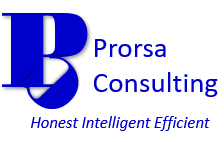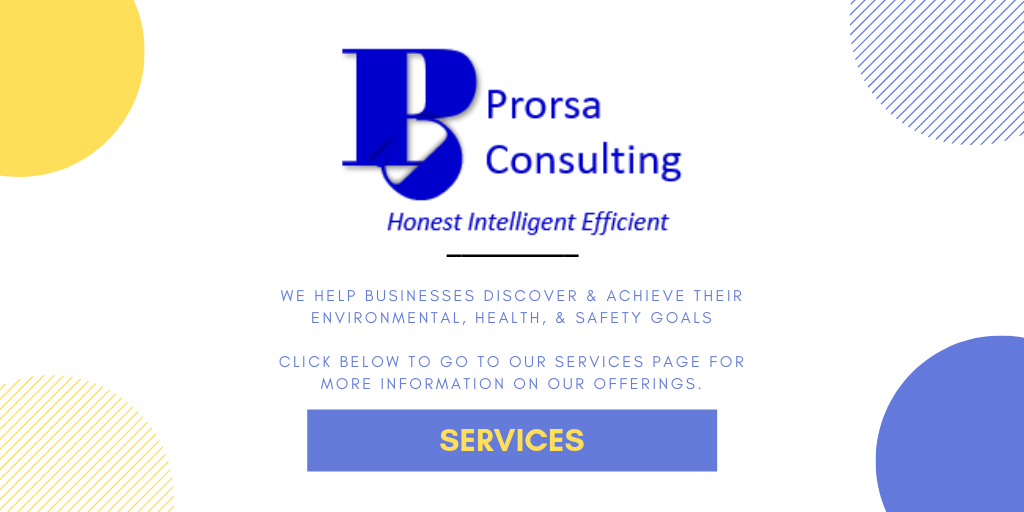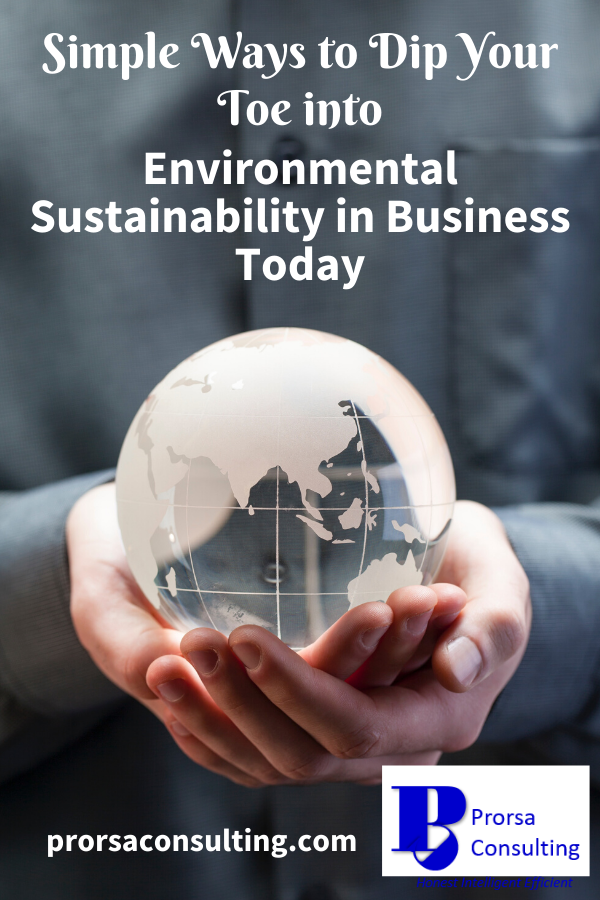Simple Ways to Dip Your Toe into Environmental Sustainability in Business Today
By : Admin -

Many organizations shy away from environmental sustainability in business, not knowing that getting started can be relatively easy.
After all, each company has the flexibility to design sustainable environmental business practices that work for its operations.
Sustainability covers a myriad of practices designed to minimize consumption in order to preserve the environment and precious natural resources for future generations.
Recently, an increasing number of consumers not only desire but insist on their products and services coming from companies engaged in environmentally-friendly business practices.
Organizations cannot afford to be reluctant when it comes to sustainability if they want to stay competitive.
Subsequently, a business approach focused on minor changes now and building over time serves as an ingenious way to get an organization’s sustainability program off the ground.
Continue reading below to discover some simple items businesses can implement to make themselves more environmentally sustainable.
Disclaimer: Please be aware that this blog post may contain affiliate links and any purchases made through such links will result in a small commission for Prorsa Consulting (at no extra cost for you). Feel free to visit our Disclosure of Material Connection page for more information.
Environmental Sustainability in Business: Water Conservation
Water nurtures all life on Earth.
Yet, only a fraction of all the water on Earth is freshwater readily accessible for humans, animals, and plants to use.
So, not practicing sustainability around water use can lead to environmental and social costs.
According to the Sustainability Management School, 3.6 billion people globally currently reside in potentially water-stressed locations.
By 2050, this number is anticipated to be 4.8 – 5.7 billion.
Furthermore, treating water for human use carries a price tag in natural resource consumption, labor, equipment, and time, which ultimately translates to money out of end-users’ pockets.
Given this knowledge, businesses cannot simply ignore the importance of water conservation in their environmental sustainability programs.
What can organizations do to begin the journey to improved water conservation?
Assessing current water practices serves as an ideal way to start down the path of better sustainability with regards to water.
Look for places in the company’s current operations to reduce water use.
Also, organizations should locate and repair any water leaks to prevent wasting water.
Not over watering green spaces serves as another way to conserve precious water resources.
Try watering once a week, and adhere to any local lawn watering restrictions.
Furthermore, facilities should opt for dry cleanup methods whenever possible instead of using water to clean.
This becomes even more paramount when cleaning up chemical spills, as a greater potential for water pollution exists.
Moreover, don’t forget to educate workers on water conservation practices.
Small practices like shutting off the water while soaping and scrubbing during hand washing and/or drinking any and all water you take can compound through time for a significant impact.

Credit: Image by Ramakant Sharda on Unsplash.com.
What other sustainable practices should be considered in the future to expand a water conservation program?
Looking forward to greater water wins, businesses can evaluate their processes to determine if recycled water presents a feasible option for certain operations.
This can reduce water demand while saving money.
In addition, you can assess process changes to lower consumption.
These changes may include equipment modifications or replacements to utilize less water.
Sites can also conserve more water by installing low flow toilets, aerated or sensor faucets, and low flow shower heads, as applicable, in lunchrooms, restrooms, and/or locker rooms.
Finally, don’t underestimate the benefit of a professional water audit.
Audits can help you identify target areas for water conservation and provide useful suggestions to help you implement your best sustainability program around water utilization.
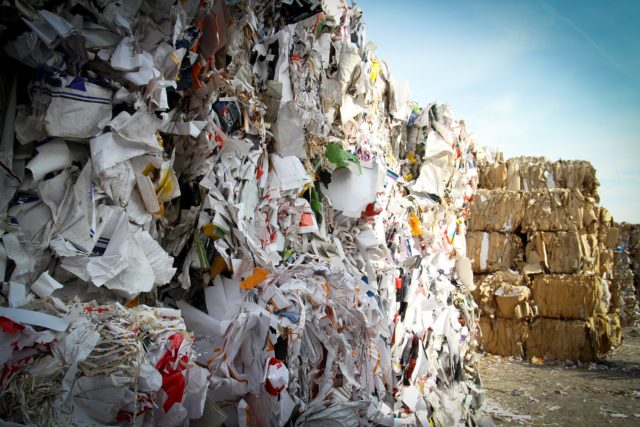
Credit: Image by Bas Emmen at Unsplash.com.
Environmental Sustainability in Business: Waste Reduction
Waste poses another environmental focus area for sustainability efforts.
During 2015, over 50% of municipal solid waste still went to the landfill for disposal, as per the Environmental Protection Agency (EPA).
Improper waste disposal can eventually lead to surface and or groundwater contamination.
Littering, in particular, also negatively impacts aesthetics in a community.
In addition, when waste is landfilled or managed on industrial sites, usually large amounts of space are required.
The unavailability of this space for other uses only penalizes communities and/or industrial operations.
Thus, companies must strongly contemplate the inclusion of waste reduction in their environmentally-friendly business practices.
What can organizations do in the short term to positively impact their waste footprints?
First, sites can institute recycling programs.
Across the U.S., many municipalities now offer recycling of paper, plastics, glass, and tin.
Companies often are able to take advantage of this benefit to support their recycling efforts.
For other items such as used oil, scrap metal, electronics, etc., seek out contractors who specialize in recycling these products.
Moreover, don’t forget to provide employee awareness training to workers as you kick off your new recycling program.
Organizations can also opt to purchase reusable products versus disposable ones.
Using reusable packaging and bulk containers can help to greatly reduce waste.
Even reusable personal protective equipment like earplugs, gloves, and aprons can help to keep a facility’s waste footprint in check.
Also, search for and purchase products with minimal packaging to prevent dealing with excessive disposal amounts.
Additionally, employees should be encouraged to go reusable.
Don’t forget to prompt workers to utilize reusable coffee mugs, water cups, and food containers to curtail waste.
Furthermore, optimizing current equipment and practices to minimize waste generation will assist in environmental sustainability efforts.
In the end, successful waste reduction requires a move toward greater natural resource conservation, which we shall cover in more detail a little later.
What about long term strategies for waste reduction?
For the future, businesses should work with an expert to complete a professional waste assessment.
The evaluation can determine which physical and/or process changes would help to reduce waste in the business’s operations.
This action may necessitate a review of products and raw materials procurement.
We will get into this more in a few minutes.
Another great long-term strategy would be researching opportunities to reuse byproducts or sell them to others for further use.
Many companies utilize the reuse of byproducts and/or the sale of these materials to reduce waste.
Think about it . . . if you reuse or sell all your outputs, then you have achieved zero waste.
Environmental Sustainability in Business: Energy Efficiency
With the increase in awareness of climate change, heightened significance has been bestowed on energy efficiency.
Most of our energy consumption depends on fossil fuel combustion.
The U.S. Energy Information Administration reports 81.5% of total U.S. energy consumption came from fossil fuels during 2015.
The emissions from fossil fuel use further exacerbate climate change.
Furthermore, energy consumption intertwines itself deeply into almost all aspects of our lives.
We consume energy for heating, food production and preparation, transportation of goods and people, and electricity.
So, energy efficiency has certainly earned its role in overall environmental sustainability in the workplace.
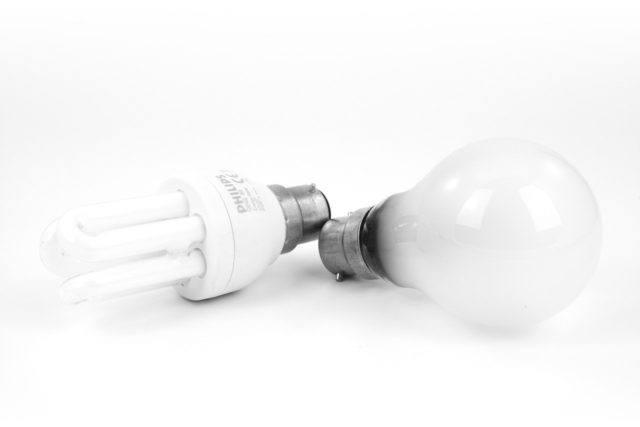
Credit: Image by PublicDomainPictures at Pixabay.com.
Where can organizations make small but impactful gains quickly with regard to energy efficiency?
Incorporating electricity saving practices like turning off lights, appliances, electronic devices, etc. when not in use presents an excellent place to begin energy-efficiency endeavors.
Again, employee awareness plays a key role here to drive success.
Furthermore, businesses should make use of natural lighting whenever possible.
Daylight is free and does not make extra contributions to greenhouse gases.
Likewise, encouraging ride-sharing and the use of mass transit helps to reduce transportation fuel use.
Companies also should ensure the optimization of their product logistics strategies for transportation emissions reductions as well as for cost savings.
Choosing to facilitate product delivery via railroad or barge/vessel often results in lower costs and better energy efficiency per unit than deliveries by over-the-road hauling.
Subsequently, companies can explore options to utilize phone and videoconferencing more often to lessen the transportation energy use associated with face-to-face meetings.
In recent years, the technology to conduct presentations and discussions online has greatly improved, causing a surge in its use.
Don’t get caught not taking full advantage of these handy tools to cut costs and your environmental footprint.
Moreover, be sure to perform preventative maintenance and make repairs in a timely fashion to equipment and vehicles to promote the best energy efficiency.
Looking into the future, how can businesses build on initial efforts to raise energy efficiency?
As with the other workplace environmental sustainability areas we have discussed, a professional audit can go a long way to move a site towards its energy efficiency goals.
It can provide stellar information to help reduce energy use and optimize industrial and commercial processes.
Make certain to assess the possibility of fuel-switching to lower carbon-emitting sources during the audit.
In addition, work to replace bulbs, appliances, equipment, and vehicles with energy-saving or more fuel-efficient versions.
Be sure to research what tax incentives may apply to the purchases for theses types of replacements.
Organizations could also implement remote work and/or alternative work schedule programs.
These options assist with decreasing the number of commutes to the office, resulting in lower fuel use associated with workers’ transportation.

Credit: Image by Gerd Altmann at Pixabay.com.
Environmental Sustainability in Business: Natural Resource Conservation
Everyone consumes natural resources during the normal course of business and life.
Moreover, according to the World Resources Forum, natural resource extraction increased 45% globally between 1980 and 2005.
When thinking about natural resources, it’s not just the primary fuels and raw material inputs impacting a business’s natural resource footprint.
Natural resources consumed in secondary and tertiary processes can make a difference in the consumption bottom line.
Any finished products purchased to support the processes on-site, including administrative tasks, take natural resources to produce and impact a company’s end-use bottom line.
Furthermore, the degradation of the natural environment from the pollution associated with resource consumption can actually decrease the availability of certain biomass resources, i.e. animal- and plant-based materials.
The use of nonrenewable resources presents a special challenge, as these materials cannot be replenished.
As such, organizations should make natural resource conservation a central part of their environmental sustainability practices in the workplace.

Credit: Image by Sarah Brown at Unsplash.com.
How can companies promote swift wins with natural resource conservation as part of a sustainable enterprise?
Start with setting and pursuing natural resource conservation goals to lessen negative impacts on the environment.
Businesses can work to reduce the usage of resources by optimizing current processes for efficiency.
Look for areas where the unnecessary generation of waste occurs.
All inputs into the system should contribute to a beneficial output if at all possible thereby minimizing byproducts and wastes.
Workers will play an integral part in this sort of waste reduction, so get them involved early.
Subsequently, organizations can opt for recycled substances or waste streams from other entities as alternative raw materials when feasible.
For instance, using recycled plastic instead of newly made plastic in a process will help to conserve the natural resources associated with the more intensive plastic manufacturing process.
Over time, what should companies do to boost their natural resource conservation efforts?
Sourcing your natural resources responsibly should be on the top of every organization’s list when looking to impact an environmental footprint over the long term.
We will cover more on this particular topic in the next section.
Assessing opportunities to mitigate natural resource consumption provides another strategy to reduce the impact on the environment.
Tasks like planting trees, participating in conservation banks, performing land reclamation activities, etc. all assist in encouraging proper natural resource stewardship.
Lastly, organizations should practice continuous improvement with regards to environmental management.
In this case, reviewing and lowering natural resource consumption targets as practicable over time will prompt greater business environmental sustainability gains in the future.
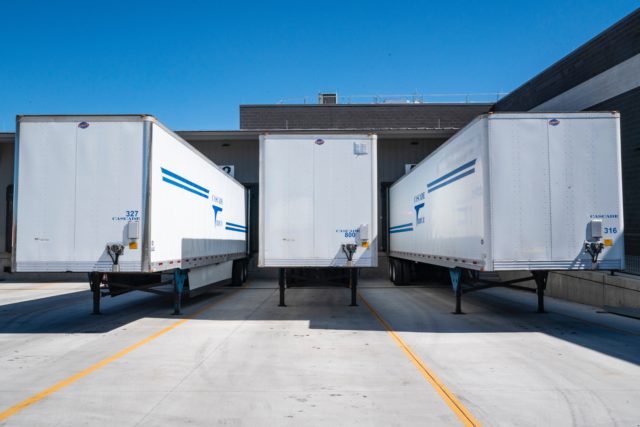
Credit: Image by Elevate at Pexels.com.
Environmental Sustainability in Business: Supply Chain Responsibility
No comprehensive sustainable business strategy can be complete without addressing environmental impacts in an organization’s upstream supply chain.
Why not?
Simply put, the activities of a company’s suppliers and vendors indirectly contribute to the environmental footprint of every business they serve.
Based on analysis from McKinsey & Company, only around 25% of organizations actually interface with their supply chains concerning upstream indirect greenhouse gas emissions.
The same assessment found that more than 75% of consumer product manufacturers’ greenhouse gas emissions come from embedded emissions (those inherent in the upstream supply chain).
Hence, supply chains can make a dramatic difference in a business’s overall environmental footprint.
They also serve as prime candidates for incorporation into workplace sustainability strategies.
What items should companies target in an initial plan to create a sustainable supply chain?
A reasonable first step to begin building better supply chain environmental sustainability would be to contact an in-house procurement representative about responsible sourcing.
Procurement personnel possess a wealth of information on suppliers and can aid you with the supply chain assessment we are about to cover.
Next on the list would be an assessment of the current supply chain.
During this evaluation, you should collect enough information to build an overall picture of your suppliers’ sustainability programs.
Knowing their sustainable business practices and goals will assist you in properly assessing your own in-house performance and improvement opportunities.
A supplier’s survey may provide the best means to facilitate the gathering of suppliers’ sustainability data.
You can also use the survey to inquire about your suppliers’ efforts to assess sustainability in their own supply chains.
Next, conflict minerals (tin, tantalum, gold, and/or tungsten sourced from conflict-afflicted areas) have gained importance in recent years in environmental, social, and governance (ESG) programs.
As such, these natural resources should be addressed in your organization’s sustainable business practices.
The disclosure of conflict minerals currently is required for a subset of organizations (primarily publicly traded companies where the mineral is necessary to functionality or production of a product).
However, it makes the best business sense to steer clear of these materials in your processes if at all possible.
So, businesses should work with their procurement representatives to ensure these particular minerals are sourced from places outside of conflict zones.
When working toward overall sustainability at work, organizations also should ask the following questions concerning their procurement practices:
- Is preference given to eco-friendly materials and equipment (energy saving/efficient, alternative fuels, carbon-neutral, etc.) over more traditional inputs?
- Are contractors and vendors reviewed for environmental compliance practices and sustainability efforts prior to contract issuance?
- Are our contractor/vendor sustainability requirements written and communicated to potential partners at the beginning of the procurement process?
The answers to these questions will help you address potential weaknesses in sustainable procurement practices when looking longer term.

Credit: Image by Fauxels at Pexels.com.
What procurement items should be addressed to ensure sustainable procurement for the long run?
For future sustainable procurement, businesses must engage in creating a comprehensive procurement strategy.
Ideally, the strategy would include sustainability as a vital part of the process.
This often will require policy and procedural changes on how sourcing and contracts with suppliers, contractors, and vendors are executed.
Furthermore, the organization should commit to partnering with other sustainable enterprises for upstream materials, products, and services.
Do your research here to identify those companies that have published business sustainability strategies.
Also, look for organizations with advertised goals and eco-friendly products and services.
Companies possessing green certification(s) make excellent partners, as well.
Last but not least, set feasible targets for the number of procurement dollars spent on environmentally-friendly services and products.
For continuous improvement, increase the percentage of procurement monies spent on eco-friendly materials and contracted activities over time.
Other Articles Related to Environmental Sustainability You May Like
Top Management Commitment in EHS: The Surprise Defense to a Deficient Culture
Avoid These Common Mistakes in Your Business Sustainability Statement
Pollution Prevention Strategy: The Forgotten Child in a Compliance First and Only World
Waste and Hazardous Waste Management Tips for Tackling Risk in Your Small Business
Concluding Thoughts
Organizations can start increasing environmental sustainability in business with small, inexpensive changes to their operations.
Additionally, companies should incorporate continuous improvement as an essential part of sustainable program growth over time.
Building a sustainable approach to how an organization conducts its business helps to promote a cleaner environment.
This helps to leave a more resource-rich planet for future generations to enjoy.
We encourage your feedback on this blog. Be sure to like and/or share below if you enjoyed the content. You can also provide us with feedback via our Contact Us page.
Also, don’t forget to follow Prorsa Consulting on LinkedIn, Pinterest, and Twitter.
How would you like to have access to additional, exclusive EHS updates and info from Prorsa Consulting? Just sign up for the Prorsa Consulting Newsletter below. You’ll receive access to our Free Resources area and all the tools, templates, and presentations in the library. Get your free subscription today!
